|
|
|
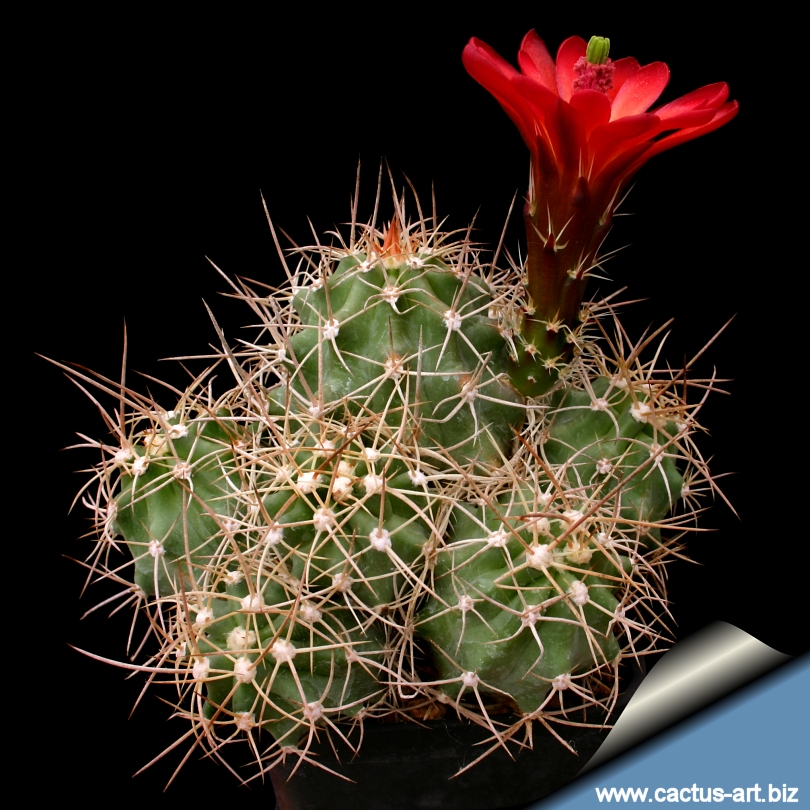
Echinocereus triglochidiatus var mojavensis (fma. inermis) SB686 Mesa
Co, Colorado, USA
(In this population some plants can be almost completely
spineless, while others have spined stems with many spines per areole.
Plants with intermediate characteristics are also common )
|
|
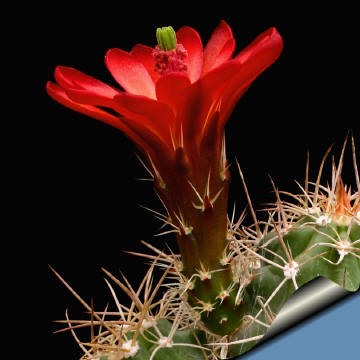 |

Strongly spined, clumping species with scarlet red flowers.
They bloom from April through June, and
are the first to bloom in the desert. |
|
. |
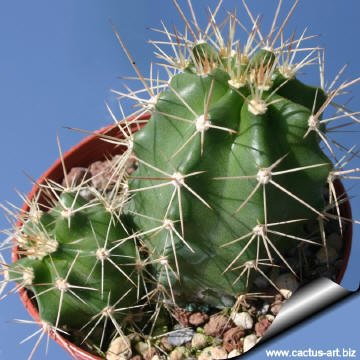 |
 |
|
. |
|
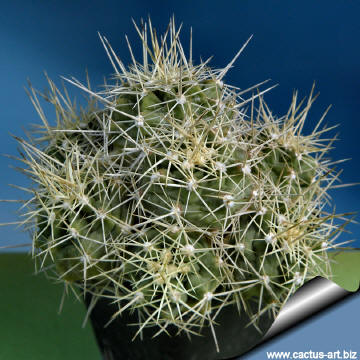 |
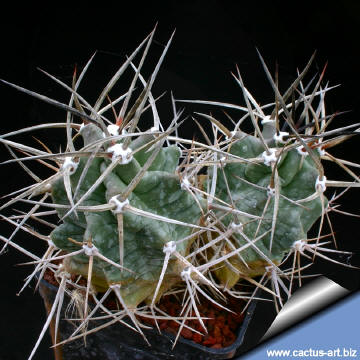 |
|
Stoutness, colour and shape of spines
greatly depends on clone and growing condition. |
|
Photo of conspecific taxa, varieties, forms an cultivars of
Echinocereus triglochidiatus.
Advertising
|
|
|
|
Family:
Cactaceae (Cactus
Family)
Scientific name:
Echinocereus triglochidiatus
var. mojavensis
(Engelm. & Bigelow) L. Benson
Proc. Calif. Acad. Sci. ser. 4, 25:255. 1944
Origin: Southern California to Colorado, and
south through Texas into Mexico.
Plants in the western portion of
the range of Echinocereus triglochidiatus are known as
E.
triglochidiatus var. mojavensis. That taxon includes
curly-spined plants (mainly in California) and straight-spined plants
(including most populations in Arizona, Utah, and western Colorado).
Habitat: Mojave desert, chaparral. It is a
fairly common component of vegetation communities on dry, well-drained
gravelly and rocky soils on upper bajadas and slopes into the mountains
in the Upper Sonoran (Pinyon-Juniper Woodland), Transition (Yellow Pine
Forest), and Canadian (Pine-Fir Forest) life zones. Sometimes the plants
grow in sand-stuffed
rock cracks. Such plants are small, and only have
several stems. The plants growing by shady rocks and bushes looks much
stronger.
Elevation: Above about 1500-3000 m.
Conservation status: Listed in
CITES appendix 2.
Synonyms:
-
Echinocereus triglochidiatus
Engelmann
in F. A. Wislizenus, Mem. Tour N. Mexico. 93. 1848.
Cereus
triglochidiatus Engelmann 1848
- Echinocereus triglochidiatus var. mojavensis (Engelm.
& Bigelow) L. Benson
Proc. Calif. Acad. Sci. ser. 4, 25:255. 1944
- Echinocereus triglochidianus var. mojavensis
- Echinocereus coccineus subsp. mojavensis
- Echinocereus triglochidianus subsp. mojavensis
Common Name: Mojave kingcup
cactus, Mojave Hedgehog, Mojave Mound
Cactus, Mound Hedgehog-Cactus.
|
|
Echinocereus mojavensis,
is one of the most interesting cacti. This species often forms large
clumps, more than a half a meter in diameter, with more than a hundred
heads (but large mounds with 500 heads have been reported)
Stems: Usually erect, densely packed, up to about 30-50 cm tall,
each usually less than about 5 cm
in diameter, bluish green.
Ribs: About 10.
Areoles: 10-40 mm apart, and somewhat woolly.
Spines: The plant is densely covered with spines.
They are gray,
flat, about 5cm long, curved (almost wavy), twisting, and often
interlocking with those of neighboring stems to form a dense web of
spines covering the mound. Central and radial spines
are difficult to
distinguish.
Inflorescence: Solitary flowers emerge from near the tip of
individual stems. Flowers are funnel-shaped; orange to red,
and about 5-8
cm
in diameter.
Blooming season: Blooms during spring.
Fruit: Cylindrical, about 2,5 cm long, 1,5
cm in diameter. Reddish
when ripe, spines deciduous. Juicy and edible, pulp white.
Fruiting:
2-2.5 months after flowering.
A spineless form (var.
inermis) has been applied at
various taxonomic ranks to individual plants with spines absent, or
nearly so, in the eastern portion of var. mojavensis,
mainly found in the mountains and mesas of western Colorado and eastern
Utah. On these plants, areoles may have very few spines, and some stems
can be almost completely spineless. But the same plant will have spined
stems and many spines per areole in another area.
|
|
|
|

Strongly spined, clumping species with scarlet red flowers.
They bloom from April through June, and
are the first to bloom in the desert.
Cultivation:
This cactus is widely cultivated for its flowers. It is among the
easiest species to grow, flower and propagate. Water regularly from
March to October. Rot prone in winter, it needs good drainage. Claret
Cups require strong sunlight to maintain a healthy appearance, and a
harsh "dry and cool" winter environment combined with maximum light
exposure enhances spring flower production. Frost Tolerance: Depending
on the provenance, the Californian forms are hardy to -6° C; the others
are much more cold-resistant.
Propagation: Seeds
(usually), it also can be grown from cuttings, as it can branch from the
base.

 |
|